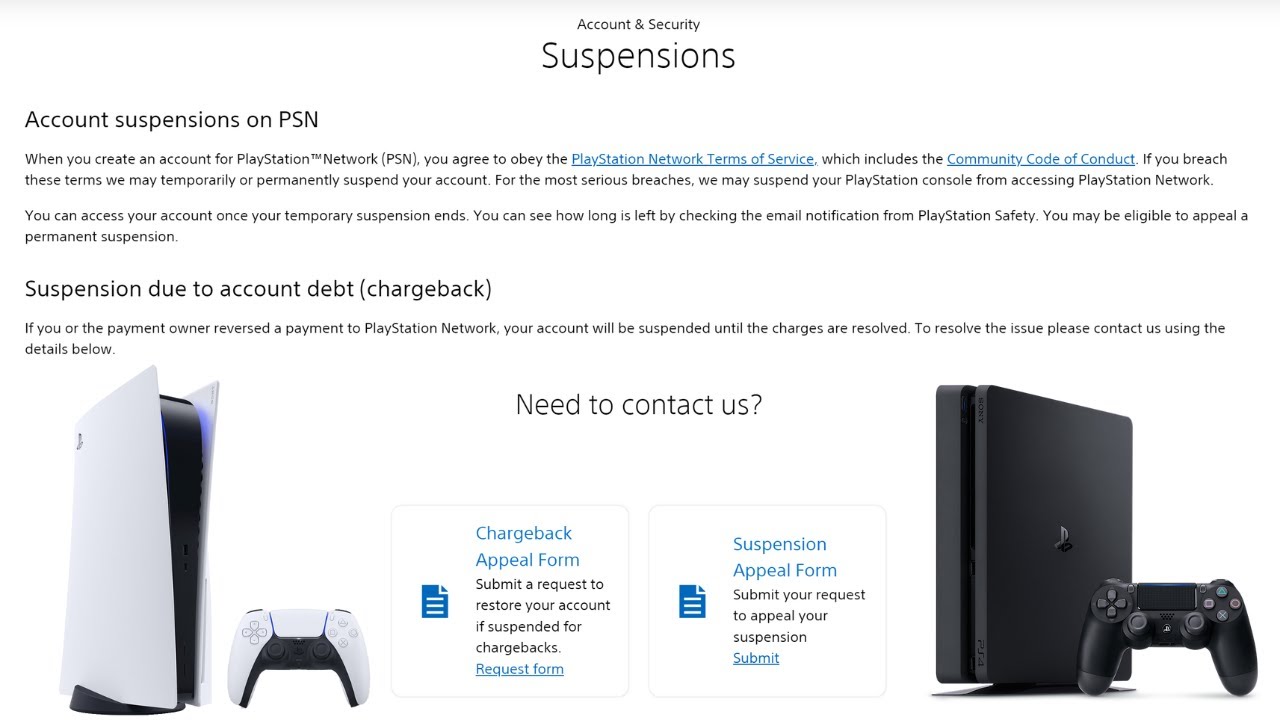Introduction
Welcome to our guide on how to apologize professionally in an email. We’ve all been in situations where mistakes happen, whether it’s a missed deadline, a miscommunication with a client, or an oversight that impacts a colleague. When these situations occur, it’s important to handle them with grace and professionalism, and one way to do that is through a well-crafted apology email.
An apology email allows you to acknowledge the mistake, take responsibility, express sincere regret, and offer a solution or compensation if necessary. It not only shows your professionalism and integrity but also helps in maintaining healthy relationships with clients, colleagues, or business partners.
In this guide, we will walk you through the steps to effectively apologize in an email, provide example phrases and templates you can use, and highlight some dos and don’ts to make your apologies more impactful.
Mastering the art of apologizing professionally is a valuable skill that can come in handy throughout your personal and professional life. Whether you’re apologizing for a mistake made at work or addressing an issue with a client, the principles we’ll cover here will help you navigate these situations with confidence.
So, if you’re ready to learn how to apologize professionally in an email and enhance your communication skills, let’s dive in!
The Importance of Apologizing Professionally in Email
Apologizing professionally in an email is crucial for maintaining positive relationships, demonstrating integrity, and resolving conflicts effectively. It shows that you take responsibility for your actions, value the recipient’s feelings, and are committed to finding a solution. Here are a few reasons why it’s important to master the art of professional apologies in email:
1. Rebuilding Trust: Apologizing professionally in an email helps rebuild trust that may have been strained due to a mistake or error. By acknowledging your wrongdoing and expressing sincere regret, you show the recipient that you value the relationship and are willing to work towards resolving any issues.
2. Maintaining Professionalism: Apologizing in a professional manner demonstrates your professionalism and reflects positively on your character. It shows that you are accountable for your actions and are committed to maintaining a high standard of conduct in your professional interactions.
3. Enhancing Communication: Apologizing professionally in an email opens up channels of communication and fosters a more open and honest dialogue. It allows both parties to express their perspectives, concerns, and expectations, leading to better understanding and more effective problem-solving.
4. Resolving Conflicts: A well-crafted apology email can help mitigate conflicts and prevent them from escalating further. By addressing the issue head-on and proposing a solution or compensation if appropriate, you demonstrate your willingness to rectify the situation and find a resolution that is mutually beneficial.
5. Strengthening Relationships: Apologizing professionally in an email shows that you value the relationship with the recipient and are committed to making amends. It opens the door for future collaboration and communication and strengthens the bond of trust between you and the other party.
6. Professional Image: Apologizing professionally in an email helps maintain a positive professional image. It shows that you take your work and interactions seriously and are willing to admit when mistakes occur. This level of accountability and integrity can have a lasting impact on your reputation in the workplace and in the industry as a whole.
Remember, the way you apologize in an email can leave a lasting impression on the recipient. By apologizing professionally, you not only resolve the immediate issue but also showcase your professionalism, integrity, and commitment to maintaining positive relationships. It’s a valuable skill that can benefit you in various personal and professional situations.
Step 1: Acknowledge the Mistake or Issue
When crafting a professional apology email, the first step is to acknowledge the mistake or issue that occurred. This is an essential part of taking responsibility for your actions and showing the recipient that you understand the gravity of the situation. Here’s how you can effectively acknowledge the mistake or issue:
1. Be specific: Clearly mention the mistake or issue that occurred, using concise and precise language. This demonstrates that you have an accurate understanding of what went wrong and shows your attention to detail.
2. Use empathetic language: Show empathy towards the recipient by acknowledging the impact of the mistake or issue on their emotions, time, or resources. This helps create a connection and shows that you genuinely care about their experience.
3. Avoid making excuses: While it may be tempting to provide explanations or justifications for the mistake, it’s important to avoid making excuses. Take full responsibility for the error without deflecting blame onto others or external factors.
4. Stay objective: Maintain a professional and objective tone when acknowledging the mistake. Avoid becoming defensive or emotional, as this can undermine the sincerity of your apology.
Example:
Dear [Recipient’s Name],
I am writing to sincerely apologize for the mistake that occurred in [specific situation or project]. I want to acknowledge that the oversight on my part caused [describe the impact or consequences]. I understand the frustration and inconvenience this has caused you and the team.
By acknowledging the mistake or issue upfront, you set the foundation for a meaningful and genuine apology. This step demonstrates your accountability and shows the recipient that you are taking the situation seriously. Remember, acknowledging the mistake is just the first step towards a professional apology; there are several other important elements to consider in order to deliver a comprehensive and effective apology email.
Step 2: Take Responsibility
After acknowledging the mistake or issue in your professional apology email, the next crucial step is to take full responsibility for the error. Taking responsibility demonstrates your integrity and willingness to be held accountable. Here’s how you can effectively take responsibility in your apology email:
1. Use ownership language: Clearly state that the mistake was your responsibility. Avoid deflecting blame or pointing fingers at others. Phrases such as “I take full responsibility for…” or “It was my oversight” show your willingness to own up to the error.
2. Avoid minimizing the mistake: Resist the temptation to downplay the severity of the mistake. Acknowledge the impact it had, whether it caused inconvenience, delays, or any other negative consequences. Taking responsibility includes recognizing the full extent of the error.
3. Show your commitment to improvement: Express your commitment to learning from the mistake and taking measures to prevent it from happening again in the future. This demonstrates your dedication to personal and professional growth.
4. Offer reassurance: Reassure the recipient that you are taking the necessary steps to rectify the situation. Whether it involves implementing new procedures, seeking additional training, or seeking feedback, assure them that you are actively working towards improvement.
Example:
Dear [Recipient’s Name],
I want to sincerely apologize again for the mistake that occurred in [specific situation or project]. I take full responsibility for the oversight and the impact it had on the team and our project. Please know that I understand the gravity of the situation and I am committed to making things right.
As we move forward, I will be taking immediate steps to rectify the mistake and prevent similar issues from happening in the future. I will [mention specific actions you will take to resolve the situation]. Rest assured, I am dedicated to learning from this experience and continuously improving my work performance.
Taking responsibility in your apology email demonstrates your integrity and helps rebuild trust with the recipient. By owning up to your mistake and showing your commitment to improvement, you take an important step towards resolving any issues or conflicts that arose. However, an effective apology goes beyond just taking responsibility – there are additional steps to consider in order to provide a comprehensive and professional apology.
Step 3: Express Sincere Regret
Expressing genuine and sincere regret is a crucial step in crafting a professional apology email. It demonstrates empathy and validates the emotions and experiences of the recipient. Here’s how you can effectively express sincere regret in your apology email:
1. Use sincere language: Choose your words carefully to convey your genuine remorse. Phrases like “I am truly sorry” or “I deeply regret” demonstrate your sincerity and show that you genuinely feel sorry for the mistake.
2. Be specific: Clearly express what you are sorry for, acknowledging the specific impact it had on the recipient. This shows that you have taken the time to understand the repercussions of your mistake and empathize with the recipient’s experience.
3. Avoid generic statements: Avoid using generic or cliche apologies that may come across as insincere. Instead, personalize your apology by addressing the specific situation and expressing regret for the specific impact it had on the recipient.
4. Validate emotions: Acknowledge and validate any negative emotions or frustrations that the recipient may have experienced due to the mistake. This shows that you understand the impact it had on them and that their feelings are valid.
Example:
Dear [Recipient’s Name],
I want to express my sincere regret for the mistake that occurred in [specific situation or project]. I am truly sorry for the inconvenience and frustration it has caused you and the team. I deeply regret any negative impact this has had on your workload and the project as a whole.
I understand the importance of delivering high-quality work and the impact that any error can have on our shared goals. Please know that I genuinely feel sorry for the mistake and the challenges it has caused you. I value our working relationship and your trust, and I am committed to making amends and learning from this experience.
Expressing sincere regret in your apology email is a crucial step towards repairing the damage caused by the mistake. By acknowledging the impact, validating emotions and offering a genuine apology, you demonstrate empathy and show the recipient that you genuinely care about their experience. However, there are other important steps to consider in order to deliver a comprehensive and effective apology.
Step 4: Offer a Solution or Compensation
When apologizing professionally in an email, it’s important to provide a solution or compensation to address the mistake or issue. Offering a solution or compensation demonstrates your commitment to resolving the problem and making things right. Here’s how you can effectively offer a solution or compensation in your apology email:
1. Analyze the situation: Take the time to thoroughly assess the mistake or issue and identify potential solutions or forms of compensation. Consider what would best address the recipient’s concerns and help restore their confidence in you and your work.
2. Offer a specific solution or compensation: Clearly outline the steps you will take to rectify the mistake or provide compensation. Whether it involves revising the work, allocating additional resources, or offering a discount or refund, be specific and transparent about what you can do to make amends.
3. Be realistic: Make sure that the solution or compensation you offer is realistic and feasible. Avoid making promises that you cannot fulfill or that exceed your capabilities. It’s better to provide a practical solution that you can deliver on rather than making empty gestures.
4. Express your commitment: Communicate your dedication to ensuring that the mistake or issue does not recur in the future. Reiterate your commitment to improvement and detail the preventive measures you will take to avoid similar mistakes in the future.
Example:
Dear [Recipient’s Name],
I want to sincerely apologize once again for the mistake that occurred in [specific situation or project]. To make amends and address the issue, I have carefully considered the situation and have devised a solution that I believe will help rectify the mistake and prevent similar incidents in the future.
Firstly, I will [mention specific actions you will take to rectify the mistake]. I assure you that I will prioritize this task to ensure that the corrected work is delivered promptly and meets your expectations.
In addition, as a form of compensation for the inconvenience caused, I would like to offer [mention specific compensation or alternative solution you can provide, if applicable]. I hope that this gesture shows my commitment to rectifying the situation and demonstrates my willingness to go above and beyond to make it right for you.
Please know that I take this matter seriously, and I am dedicated to learning from this experience to improve my work moving forward. It is my utmost priority to regain your trust and confidence in my abilities.
By offering a solution or compensation, you show the recipient that you are proactive in remedying the mistake and that you value their satisfaction. This step is crucial in the process of delivering a comprehensive and effective apology email.
Step 5: Apologize Again and Thank the Recipient
In the final step of crafting a professional apology email, it is important to reiterate your apology and express gratitude towards the recipient. By apologizing again and showing appreciation, you reinforce the sincerity of your apology and acknowledge the recipient’s patience and understanding. Here’s how you can effectively apologize again and thank the recipient in your email:
1. Apologize sincerely: Offer a final apology, expressing your regret for the mistake or issue. Use genuine and heartfelt language to convey your sincerity.
2. Reflect on the recipient’s patience and understanding: Acknowledge the recipient’s patience and understanding throughout the situation. Express gratitude for their cooperation and willingness to work through the challenges caused by the mistake.
3. Thank them for their feedback: If the recipient provided feedback or suggestions on how to prevent similar mistakes in the future, thank them for their input. Letting them know that their opinions are valued shows your commitment to growth and improvement.
4. Reinforce commitment to improvement: Reaffirm your dedication to learning from this experience and improving your performance. Assure the recipient that you will take the necessary steps to prevent similar mistakes in the future.
Example:
Dear [Recipient’s Name],
Once again, I want to sincerely apologize for the mistake that occurred in [specific situation or project]. I deeply regret the impact it had on you and the team, and I take full responsibility for the error.
I would also like to express my gratitude for your understanding and patience throughout this process. Your willingness to work with me to find a solution and your valuable feedback have been immensely helpful in addressing the issue. I appreciate your trust and cooperation during this challenging time.
Thank you for your openness in sharing your thoughts and suggestions on how we can avoid similar mistakes in the future. Your insights are highly valued, and I assure you that I will consider them carefully to enhance my performance and prevent any recurrence of this error.
Moving forward, I am committed to learning from this experience and improving my skills to provide you with the highest standards of work. Your satisfaction is important to me, and I will take every step necessary to restore your faith in my abilities.
Once again, I apologize for any inconvenience caused, and I thank you for your understanding and support. Should you have any further concerns or questions, please do not hesitate to reach out to me.
By apologizing once again and expressing gratitude towards the recipient, you show that you value their understanding and patience. This final step helps solidify the sincerity of your apology and emphasizes your commitment to growth and improvement.
Example Phrases for Professional Apologies
When crafting a professional apology email, it can be helpful to have some example phrases to guide your writing. Here are some phrases that you can use to convey sincerity and remorse in your apology:
Acknowledging the mistake:
- I want to acknowledge the mistake I made in [specific situation].
- I take full responsibility for the error that occurred.
- I am aware of the mistake I made and the impact it had on [recipient/team/project].
- I want to address the mistake that was made on my part.
Expressing regret:
- I sincerely apologize for any inconvenience/frustration caused.
- I deeply regret the impact my mistake had.
- I am truly sorry for the trouble this has caused.
- I want to express my genuine regret for the mistake made.
Taking accountability:
- I take full responsibility for my actions and the consequences they caused.
- I understand that I should have been more careful/diligent in [specific task/responsibility].
- I realize that I made an error in judgment and I am willing to face the consequences.
- I accept that I made a mistake and I am committed to learning from it.
Offering a solution or compensation:
- To rectify the mistake, I will [specific action to fix the problem].
- I would like to offer [specific solution or compensation] to make up for the inconvenience caused.
- As a token of my apology, I am willing to [specific offer, such as providing additional support or offering a discount/refund].
- I will take immediate action to ensure that this mistake is corrected and does not happen again in the future.
Showing gratitude and commitment to improvement:
- I appreciate your understanding and patience in this matter.
- Thank you for bringing this to my attention and allowing me the opportunity to make amends.
- I am grateful for your feedback and I will use it to improve my performance.
- I am committed to learning from this experience and ensuring that it does not happen again.
Remember that these phrases can serve as a starting point, but it’s important to tailor your apology to the specific situation and the recipient. Use these examples as inspiration to convey sincerity, take responsibility, and offer a genuine apology in your professional email.
Dos and Don’ts of Apologizing in Email
When it comes to apologizing in an email, there are certain dos and don’ts to keep in mind. Follow these guidelines to ensure that your apology is effective, professional, and well-received:
Do:
- Do apologize sincerely and genuinely for your mistake or the issue at hand.
- Do take ownership of the mistake and accept full responsibility without making excuses or deflecting blame.
- Do use empathetic language to show that you understand the impact of your actions on the recipient.
- Do offer a solution or compensation to address the mistake or issue and make things right.
- Do personalize your apology and tailor it to the specific situation and recipient.
- Do express gratitude towards the recipient for their understanding, patience, and feedback.
- Do show a commitment to improvement and learning from the experience so that similar mistakes can be avoided in the future.
Don’t:
- Don’t offer a generic or insincere apology that does not address the specific mistake or issue.
- Don’t shift blame onto others or make excuses for your actions.
- Don’t downplay the severity of the mistake or the impact it had on the recipient.
- Don’t rush through the apology or avoid acknowledging the emotions and frustrations of the recipient.
- Don’t make promises that you cannot fulfill or offer compensation that you cannot deliver.
- Don’t forget to proofread your apology email for clarity, tone, and grammar before sending it.
By following these dos and don’ts, you can ensure that your apology email is professional, sincere, and effective. Remember, a well-crafted apology demonstrates your integrity, accountability, and commitment to maintaining positive relationships with others.
Conclusion
Apologizing professionally in an email is an important skill that can help you navigate difficult situations, maintain positive relationships, and demonstrate your professionalism. By following the steps outlined in this guide, you can craft a comprehensive and effective apology email that shows your sincerity, takes responsibility, and offers a solution or compensation.
Remember, a professional apology email starts with acknowledging the mistake or issue, taking full responsibility, expressing sincere regret, offering a solution or compensation, and apologizing again while thanking the recipient for their understanding. It is crucial to maintain a professional and empathetic tone throughout the email and avoid making excuses or shifting blame.
Furthermore, make sure to personalize your apology to the specific situation and recipient, using genuine language and avoiding generic phrases. Your goal should be to rebuild trust, resolve conflicts, and strengthen relationships through your apology email.
Finally, continuously strive for improvement and growth by learning from your mistakes. Use feedback and suggestions as opportunities for personal and professional development. By demonstrating your commitment to improvement, you can rebuild trust and avoid similar mistakes in the future.
Apologizing professionally in an email is a valuable skill that can have a lasting impact on your personal and professional relationships. By mastering the art of a heartfelt and sincere apology, you can foster understanding, resolution, and trust with those around you.

























